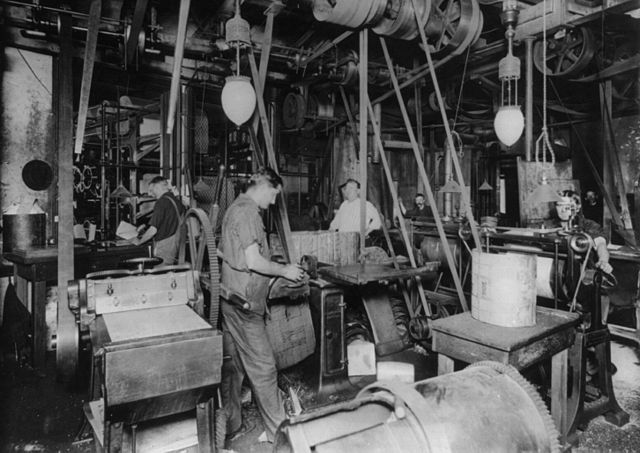Electrotyping is a chemical method for forming metal parts that exactly reproduce a model. The method was invented by Moritz von Jacobi in Russia in 1838, and was immediately adopted for applications in printing and several other fields. As described in an 1890 treatise, electrotyping produces "an exact facsimile of any object having an irregular surface, whether it be an engraved steel- or copper-plate, a wood-cut, or a form of set-up type, to be used for printing; or a medal, medallion, statue, bust, or even a natural object, for art purposes."
1837 lithographic portrait of Moritz von Jacobi (1801–1874), who invented electrotyping in 1838.
1841 magazine illustration by Joseph Alexander Adams. The illustration compares direct letterpress printing from a wood carving and from a copper electrotype copy of the carving; it is among the earliest uses of electrotypes in printing.
The electrotyping department of the New York Herald in 1902.
Copper electrotype (1911) of Ernst Rietschel's 1857 sculpture for the Goethe–Schiller Monument in Syracuse, New York USA. This sculpture is about 3.5 metres (11 ft) tall, and was produced by the WMF Company in Germany.
Moritz Hermann von Jacobi, russified from 1837 as Boris Semyonovich Yakobi was a Prussian and Russian Imperial engineer and physicist of Jewish descent. Jacobi worked mainly in the Russian Empire. He furthered progress in galvanoplastics, electric motors, and wire telegraphy.
Moritz Hermann von Jacobi
Von Jacobi's tomb, from wife and children






